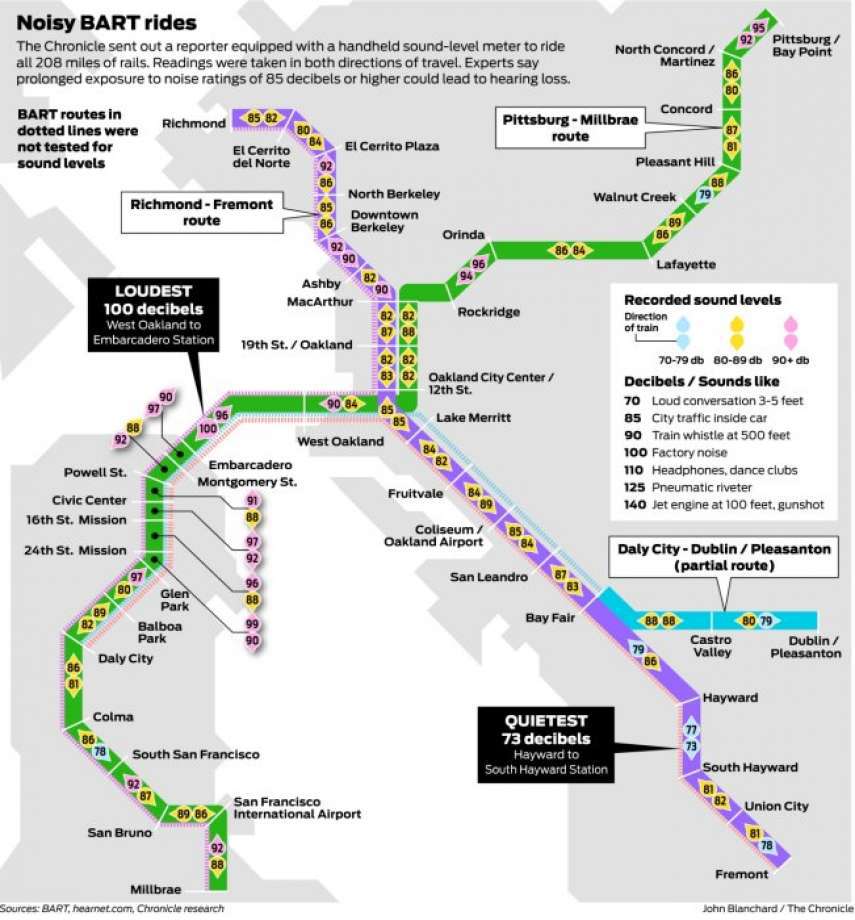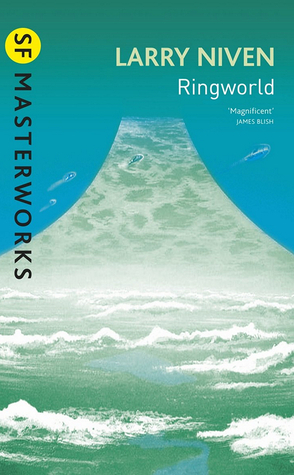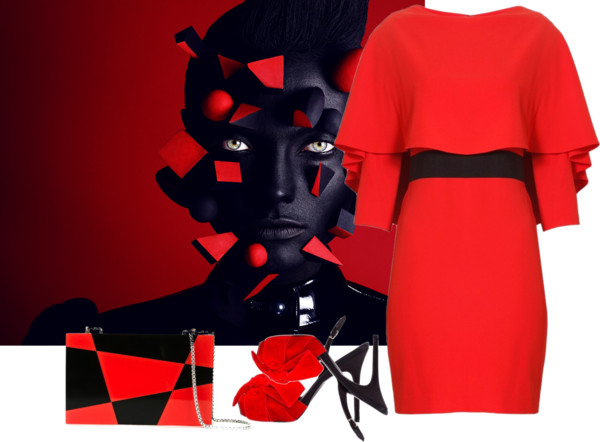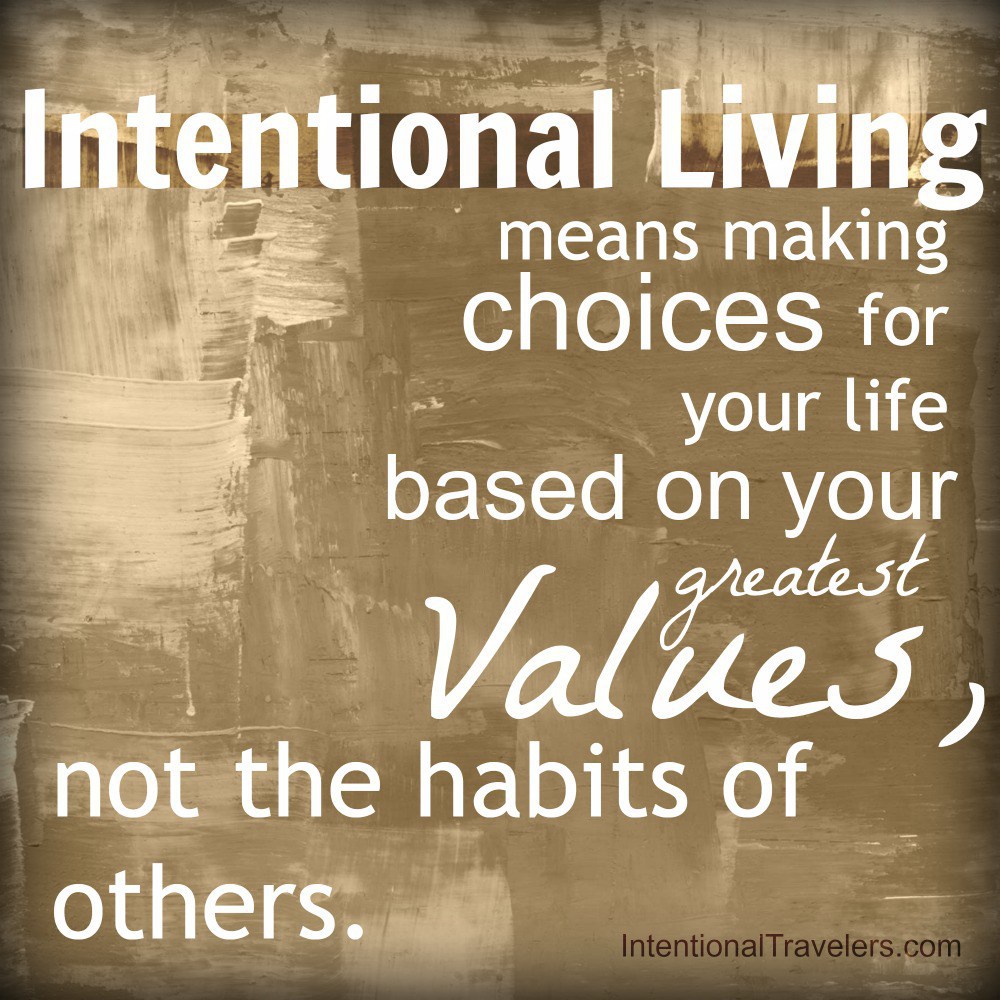I was introduced into the witty world of Colin West when my children were little and we all enjoyed Pardon said the Giraffe and Not Me said the Monkey. We soon found Colin’s own charming, ridiculous and funny poems, illustrated in his unmistakably colourful and delightful style. I’ve never read anything or seen anything by Colin that hasn’t made me smile. Poetry illustration is a real skill – so I’m delighted he has sent this exploration of the history of poetry illustrators he loves.
Thanks, Liz, for inviting me to contribute to your blog. Where to start? Well, I’ve enjoyed making up rhymes since I was about ten (an excellent age to be!) and I’ve enjoyed drawing for even longer, so maybe it was natural for me to combine the two interests.
I’m fascinated by the juxtaposition of poem and image. Let’s go back to when I was ten years old. There was a radio programme we listened to at school called Singing Together. The booklets that we sang from had wonderful illustrations accompanying the songs we sang. I studied the pictures (by top artists such as David Gentleman and Shirley Hughes) as much as I delighted in the words and music of those old folk songs.
Brian Wildsmith illustrates one of my favourite folk songs from Singing Together:
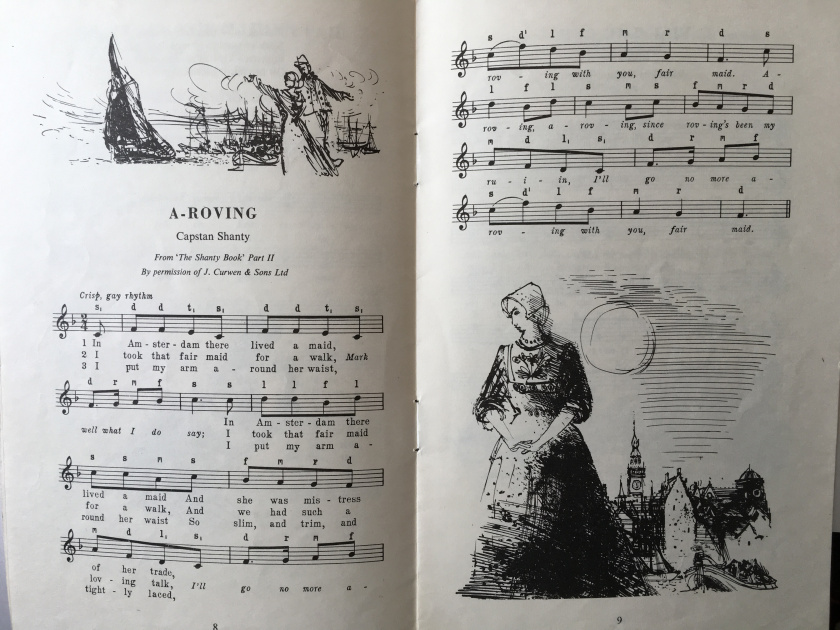
As a teenager, many of the poetry books I was beginning to collect had, at least, eye-catching, well-designed covers, if lacking in illustrations inside. I couldn’t resist these groovy covers!
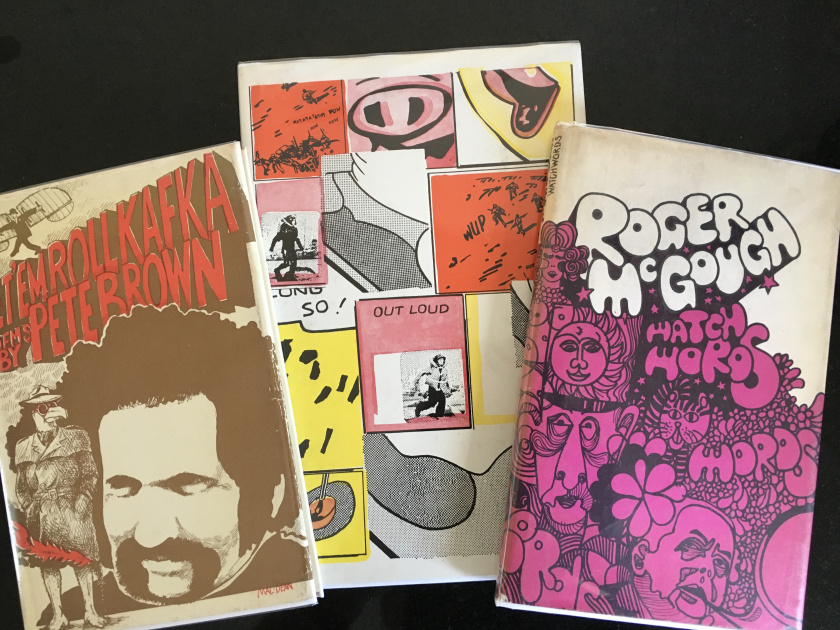
A few, such as Ogden Nash’s I’m a Stranger Here Myself had illustrations by Maurice Sendak, and Stevie Smith added her own inimitable drawings to her books.
The unique talent of Stevie Smith:
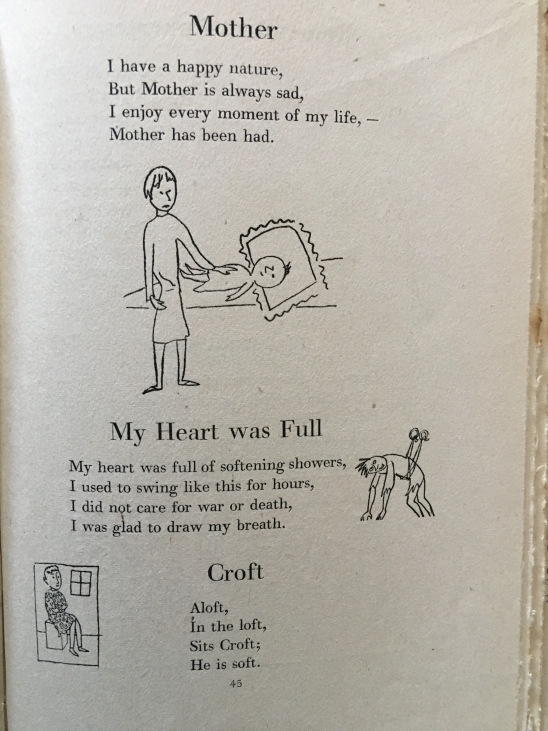
Here, all round genius Mervyn Peake illustrates his own nonsense poem:
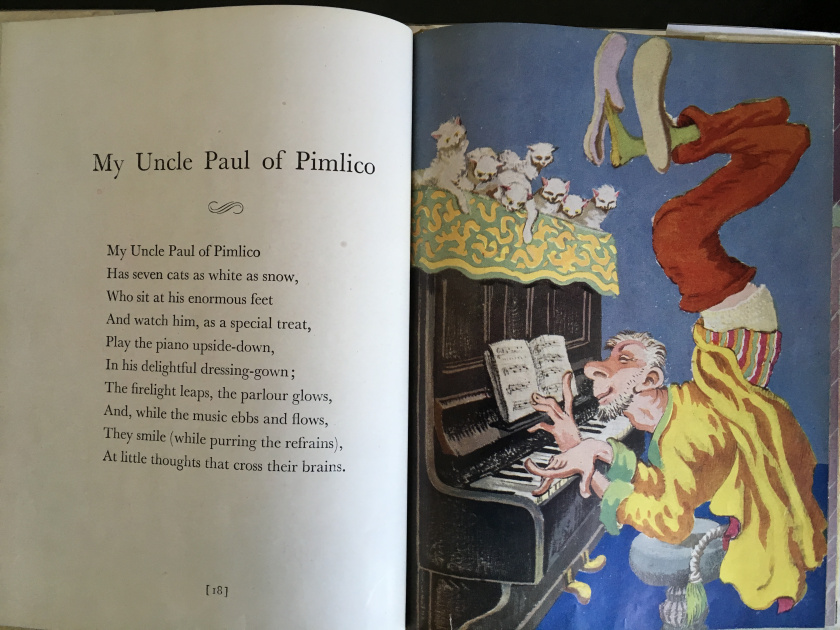
American phenomenon Shel Silverstein shows how it can be done …
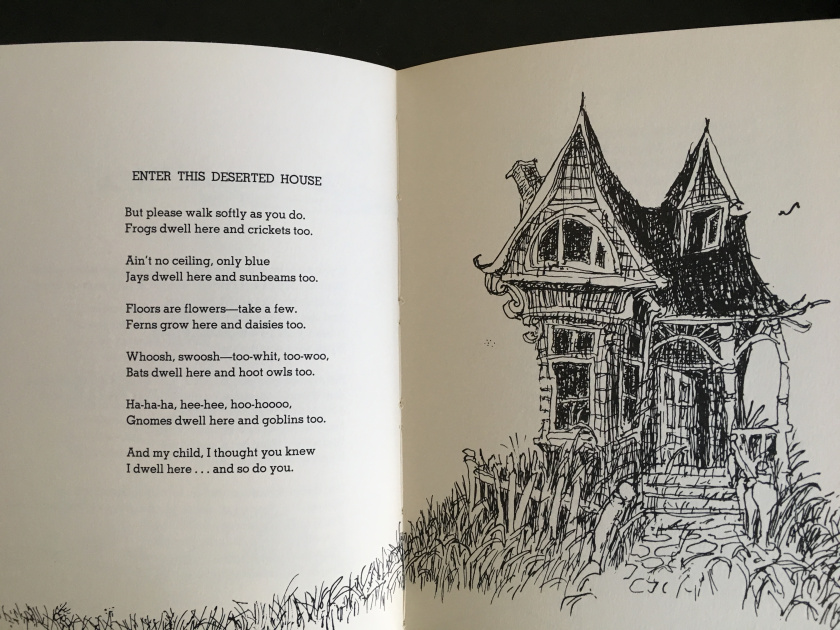
Inimitable Milligan of course:
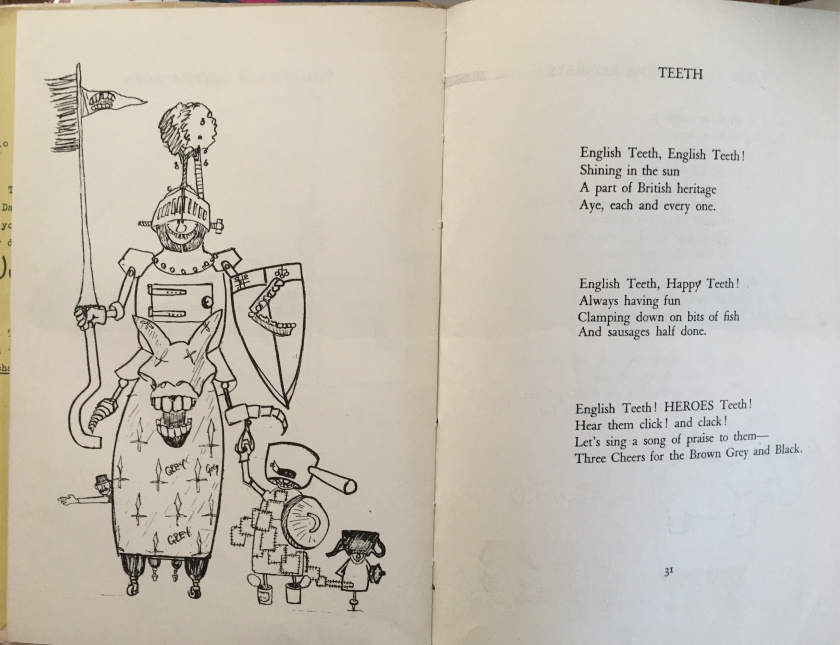
And Ogden Nash’s witty lines find a friend in Quentin Blake’s witty lines:
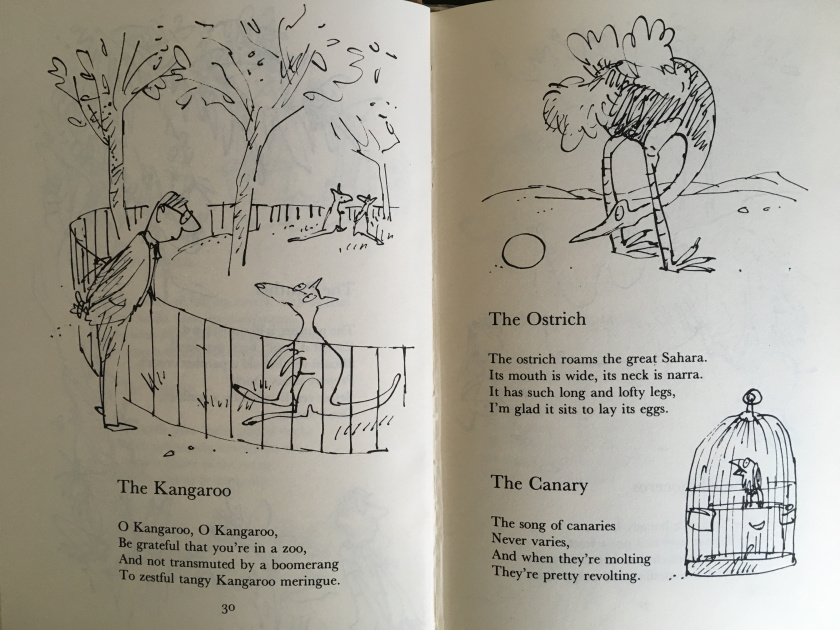
At art college, I hand-lettered my own little collection of nonsense verse, Tomorrow I’ve Given up Hope:
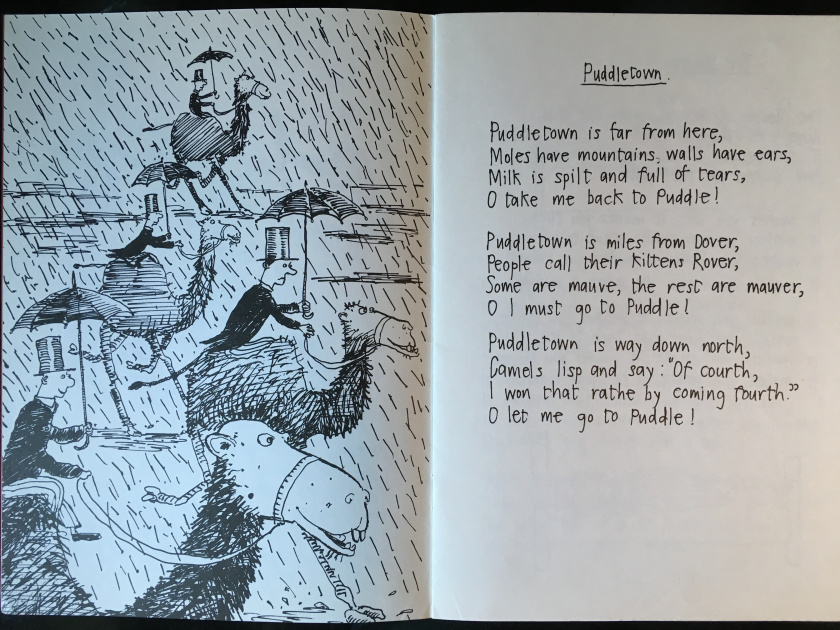
As my interest in poetry broadened, I collected books from earlier times.
John Glashan lends his distinctive drawings to Alistair Sampson’s verse in the 1950s:
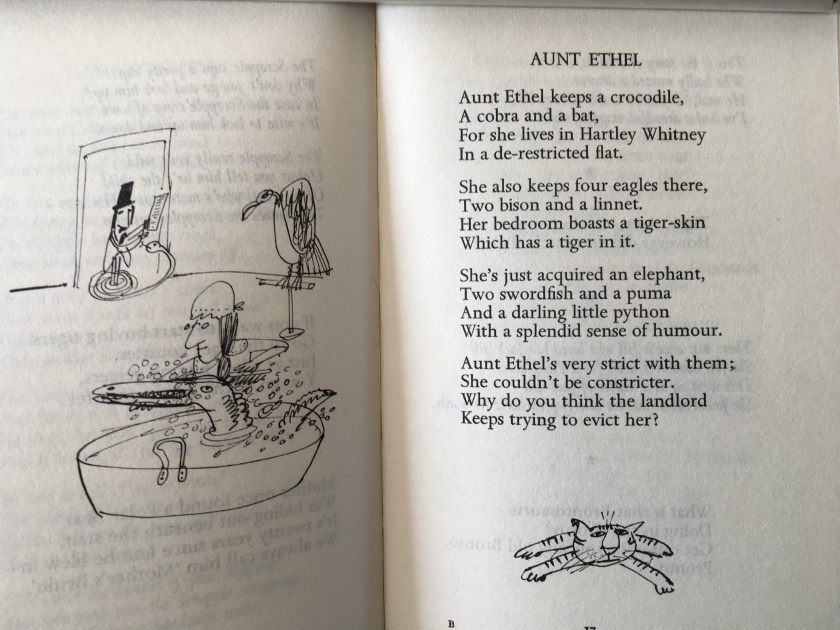
E. H. Shepard illustrated other poets than A. A. Milne. This book is by Jan Struther from 1932:
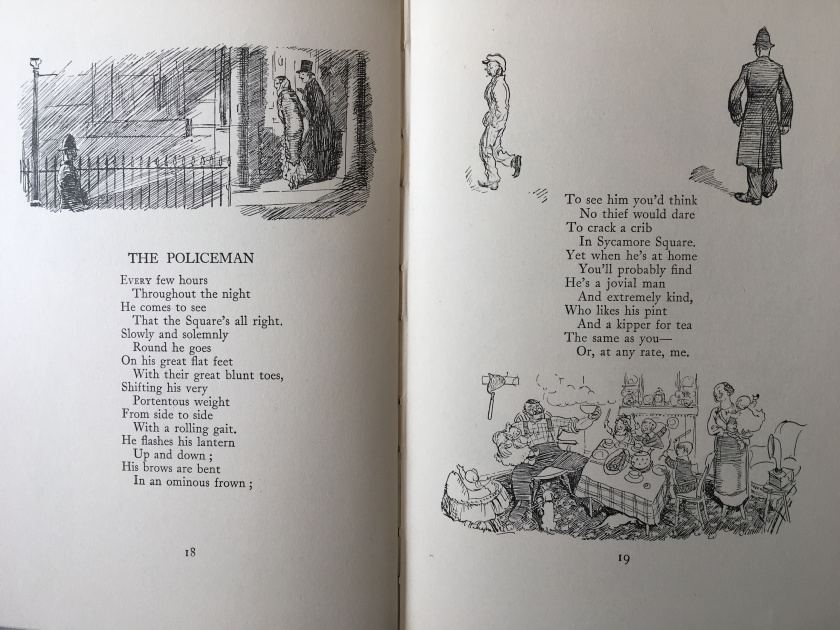
Overlooked illustrator Christopher Brooker charmingly illustrates poems by John Walsh:
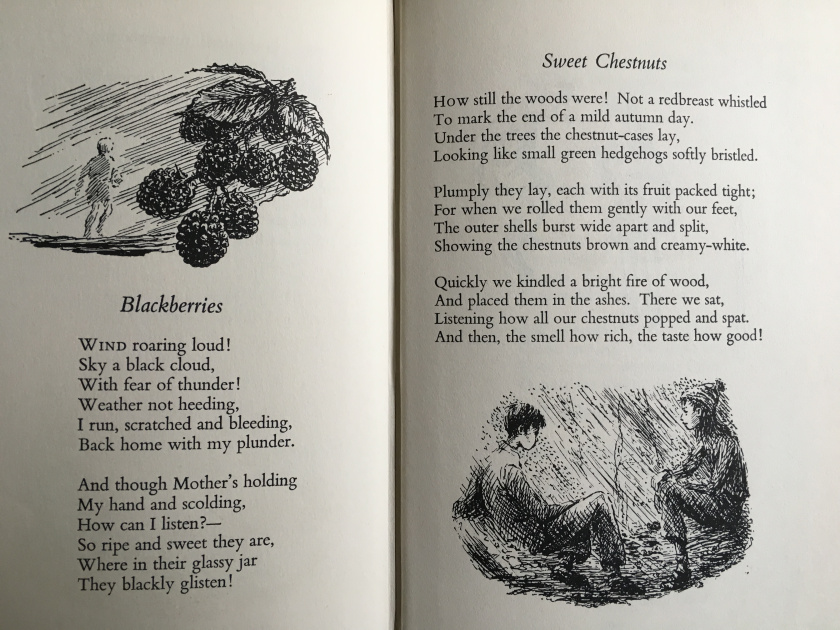
A marriage made in Heaven: Ardizzone’s drawings grace the pages of a book by Robert Graves:
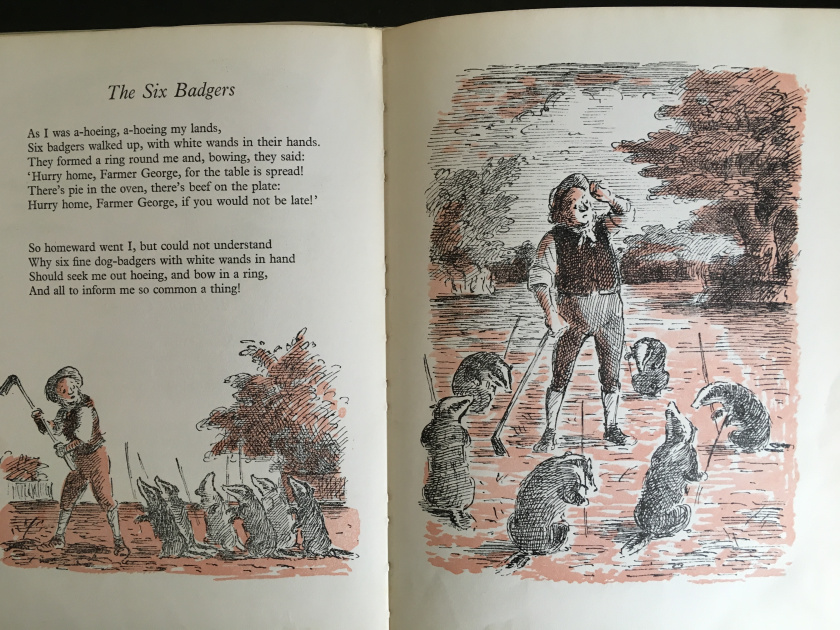
Back in the 1930s, during the heyday of humorous verse, many books by rhyming geniuses such as Harry Graham were appropriately illustrated. It wasn’t something exclusively for children.
Maurice Sendak for an adult collection by Ogden Nash:
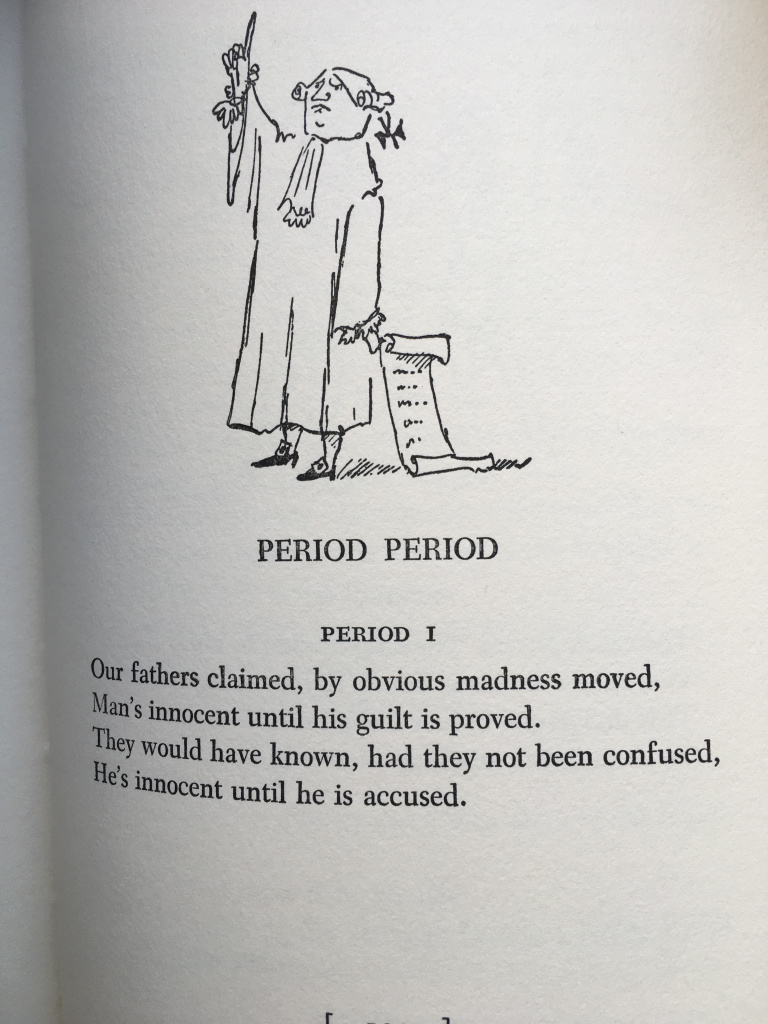
Harold Jones delightfully decorates Shakespeare:
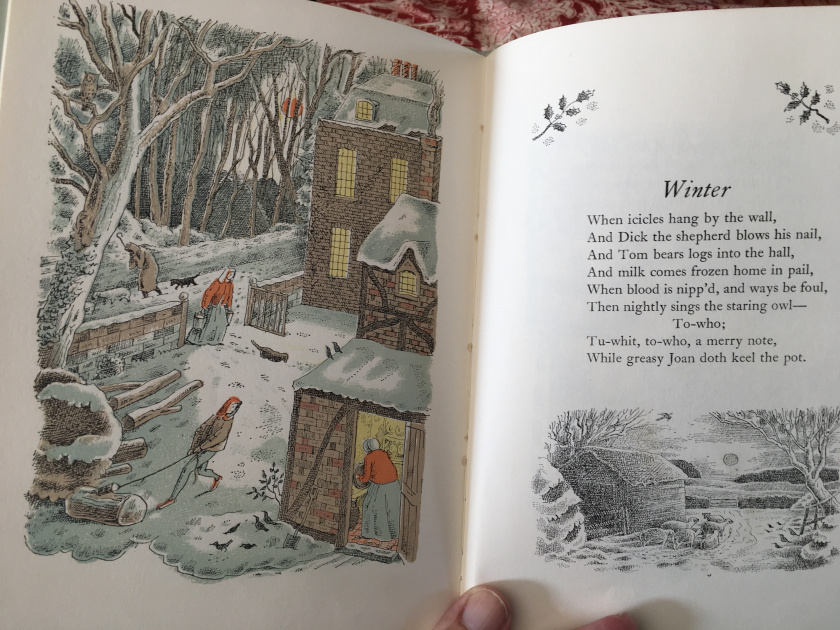
Sadly Gerard Hoffnung‘s final project, illustrating for Guinness in one of their poetic booklets for doctors. He died soon after at only 34:
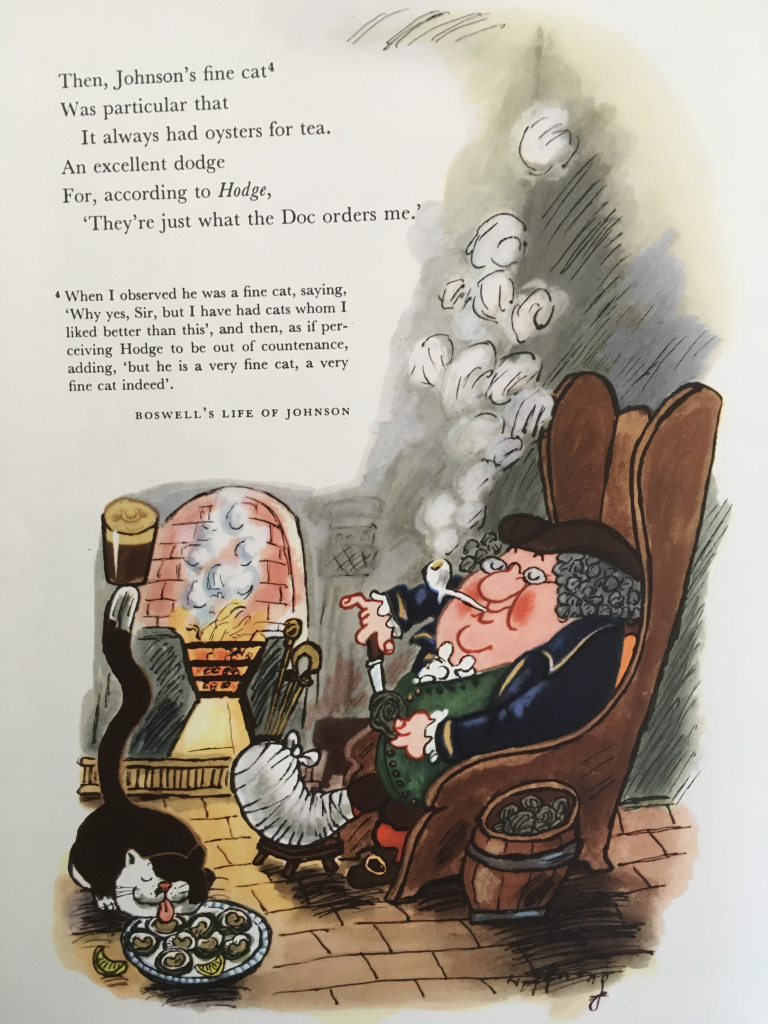
Recently, the last years of the twentieth century gave us many well-illustrated children’s poetry books.
Satoshi Kitamura‘s thoughtful drawings suit Roger McGough’s funny and punny poems:
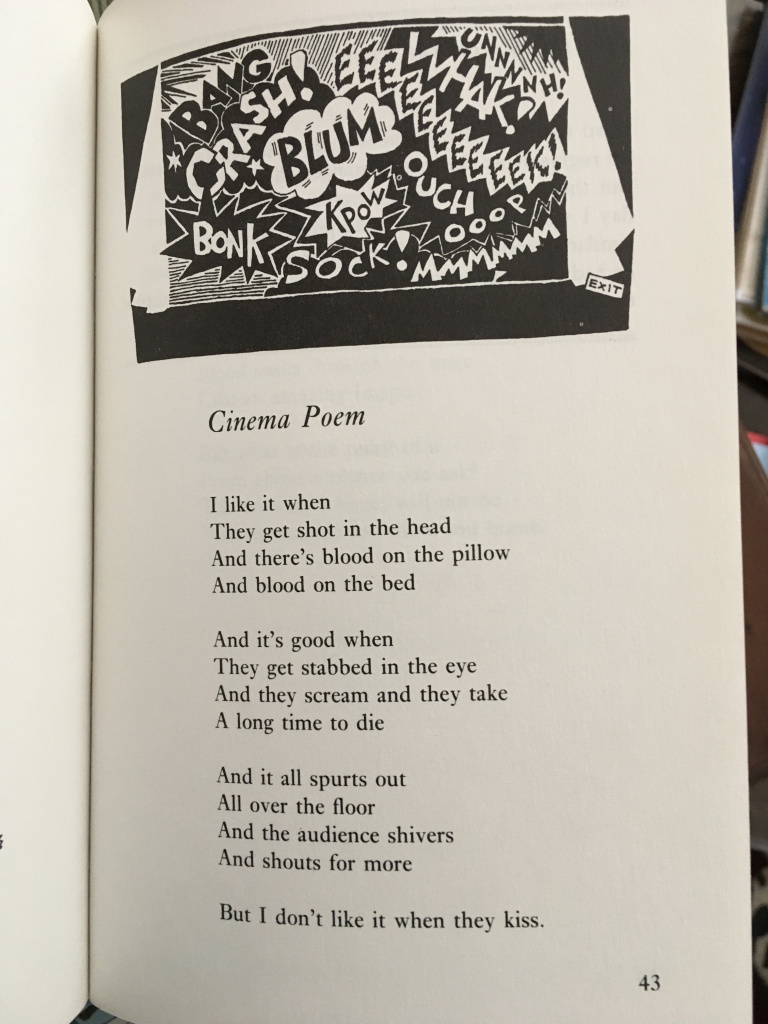
Like many of my generation of children’s writers, I was fortunate in having many of my poems anthologised and illustrated by a range of great illustrators.
This early illustration by Nick Sharratt from 1990 really captures (and adds to) the fun of my little rhyme:
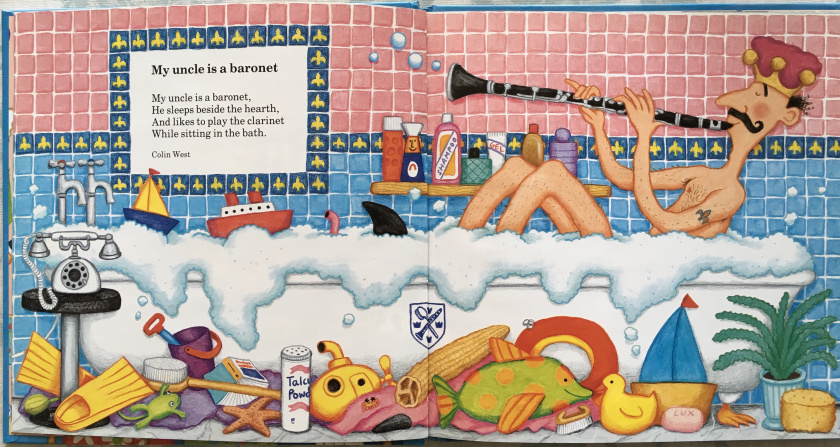
The tradition continues to a lesser extent today.
Cobbling together a new book!
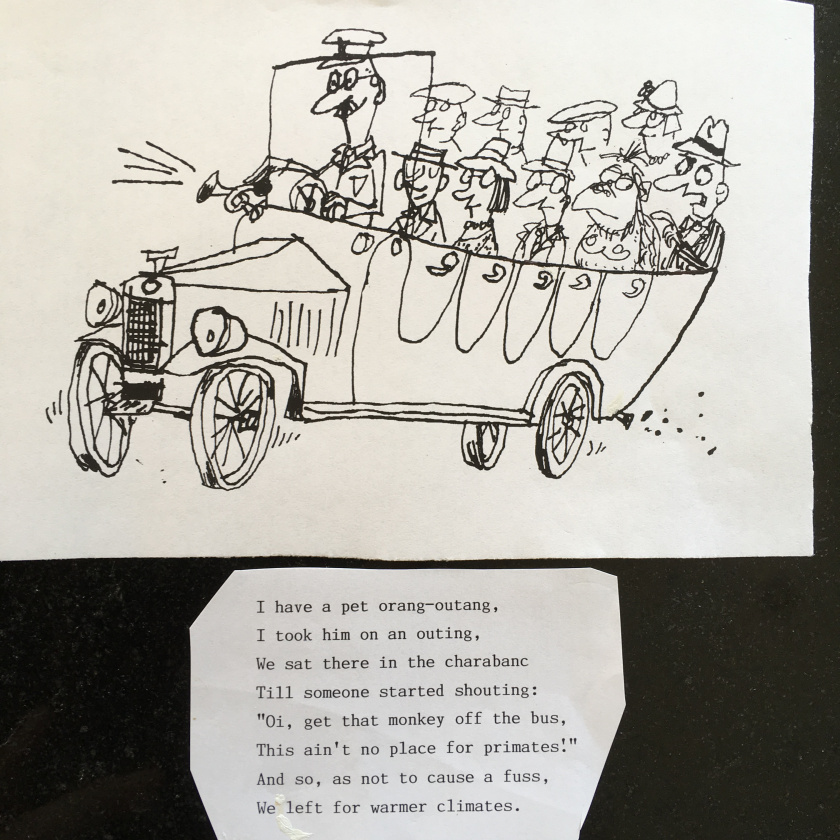
It would be interesting in schools if children illustrated each other’s poems. Or of course, do your own. You don’t have to be the greatest artist. No one could illustrate Spike Milligan’s madcap verse better than himself. And Roger McGough and John Hegley have both added their own quirky drawings to charming effect. So I’d say if you enjoy writing poems, try adding a drawing. And if you enjoy drawing, try adding a poem!
Colin’s book, published by Walker, can be bought here: Never Nudge a Budgie, and his latest book is available here: The Funniest Stuff.
Advertisements Share this:

